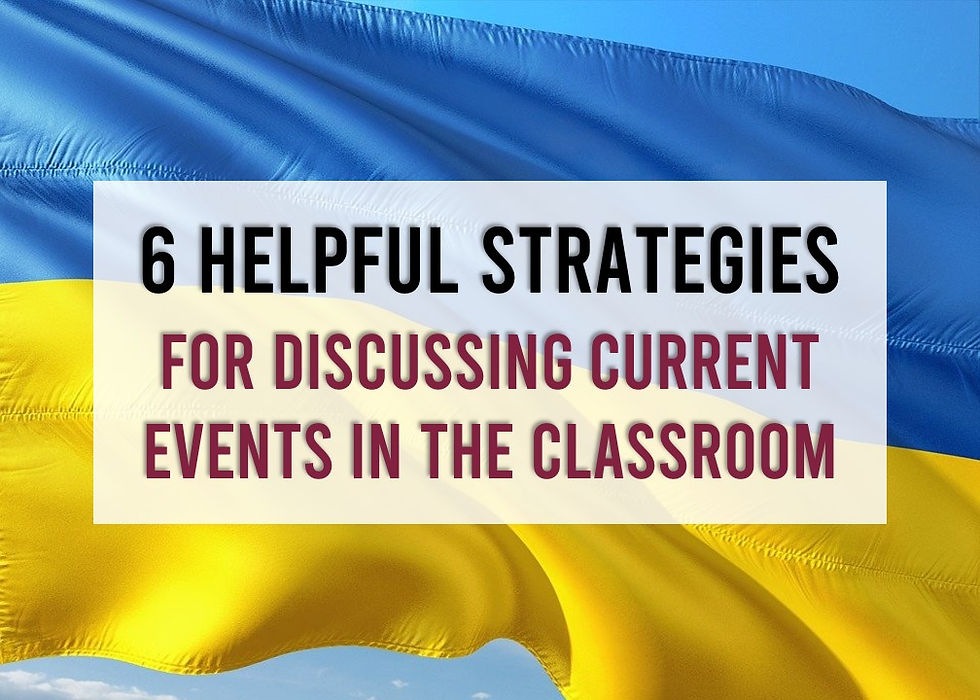6 Helpful Strategies for Discussing Current Events in the Classroom
- Michelle McDonald
- Mar 1, 2022
- 2 min read
Updated: Apr 5, 2022

When scary things are happening in the world around us, sometimes we may want to just get into the classroom and teach like nothing has happened. Maybe we don’t want to scare our students, or are afraid a student will ask a question to which we don’t have an answer to give.
While keeping to our routine can provide a means of reassurance, it’s important to remember that our silence to major events speaks volumes. Even a brief check-in with students is better than saying nothing at all.
As I'm writing this, it is February 2022, and I feel a pit in my stomach as the invasion of Ukraine is currently unfolding.
If you are at a loss for words or don't know how to start the discussion within your classroom, I want to pass along some helpful strategies from the National Association of School Psychologists and child development experts about discussing current events in the classroom. The strategies below would be beneficial for parents and caregivers as well.
Start With: What have you heard? How are you feeling?
Even if students are not exposed to breaking news, they may hear stories and updates from classmates and social media. Check-in with students and allow them to ask questions about what they are seeing and how they are feeling. Even a brief check-in is better than not saying anything at all. It’s best to start with open-ended questions like “what have you heard and how are you feeling?”
Give facts and context.
It is important to keep explanations developmentally appropriate. Young students need simple information balanced with reassurance that they are safe. Older students may have strong and varying opinions. When we allow time for students to ask questions, we can debunk memes, myths, and misconceptions. If you teach middle school or high school, you might find this resource from The Choices Program helpful for building background knowledge around the current Ukraine situation.
Provide Reassurance.
Our students may feel confused or afraid. We can let our students know that they are not alone in those feelings. Young students may need reassurance that they are safe and that the grown-ups are in control of the situation.
It’s ok to say, “I don’t know.”
If a student asks a question where there’s not a clear answer, it’s ok to say that we don’t know what happened or that we don’t have an answer. Students will respect our humility and honesty.
Look for the helpers.
One of my favorite quotes from Fred Rogers is “When something scary is happening, look for the helpers. You will always find people who are helping.” This can be a great way to share organizations that are making a difference on the ground and provide a way for students to take action.
Doom Scrolling vs. Lateral Reading
If you teach students that have access to phones, you might find that some are doom scrolling. Turn this into a teachable moment to discuss vertical vs. lateral reading. You can find a great set of lessons from Stanford History Education on Teaching Lateral Reading.



Comentarios